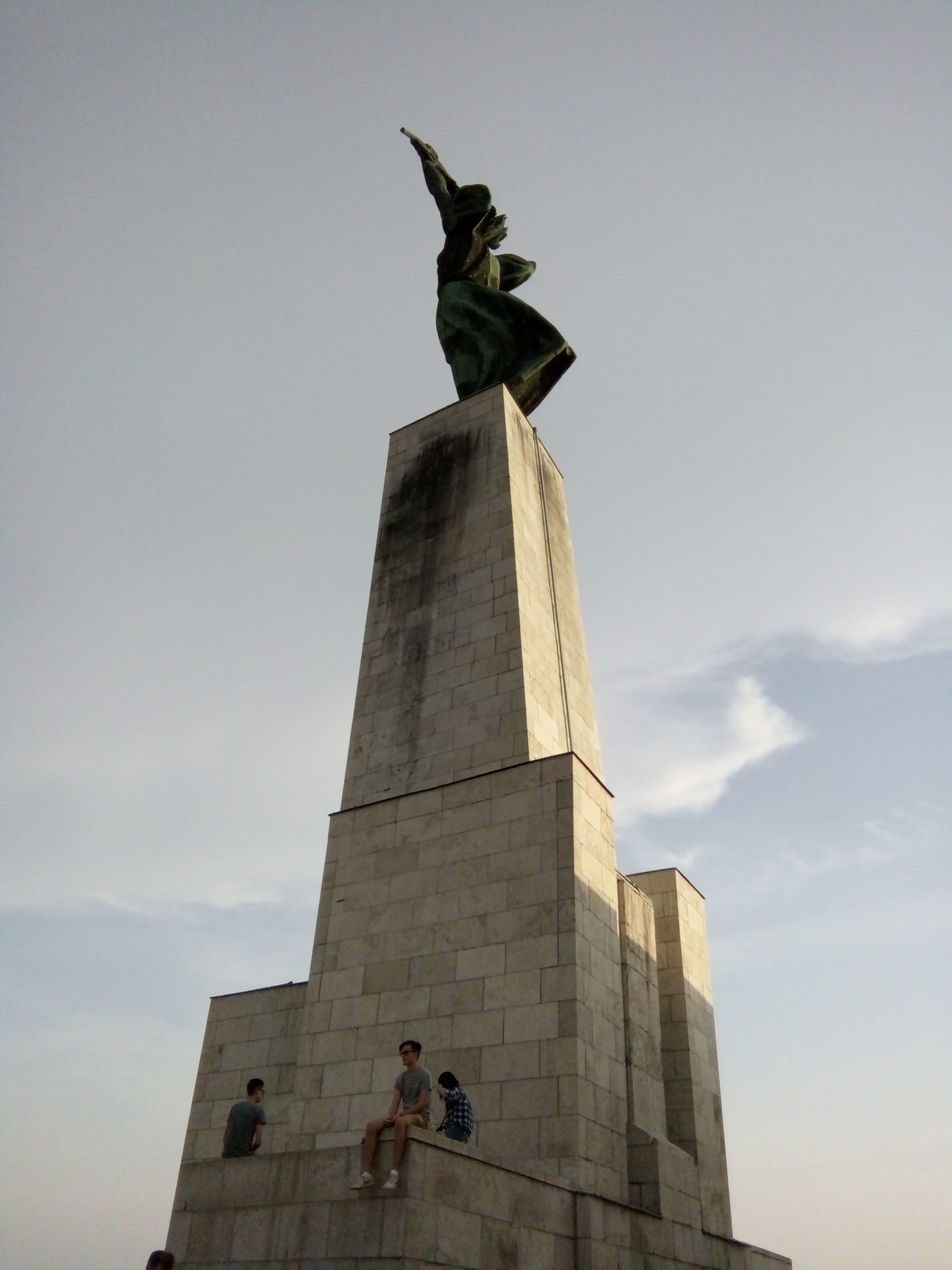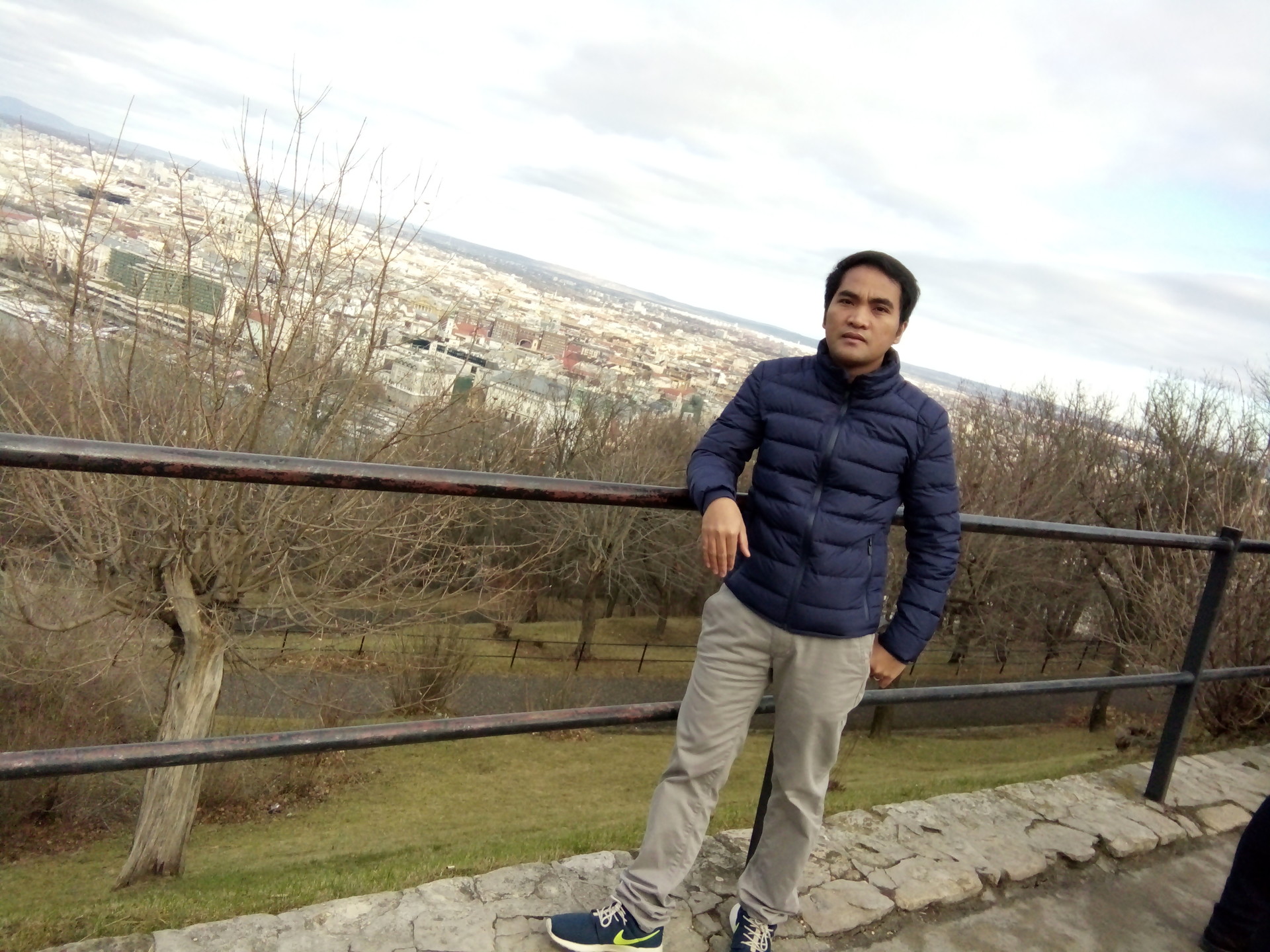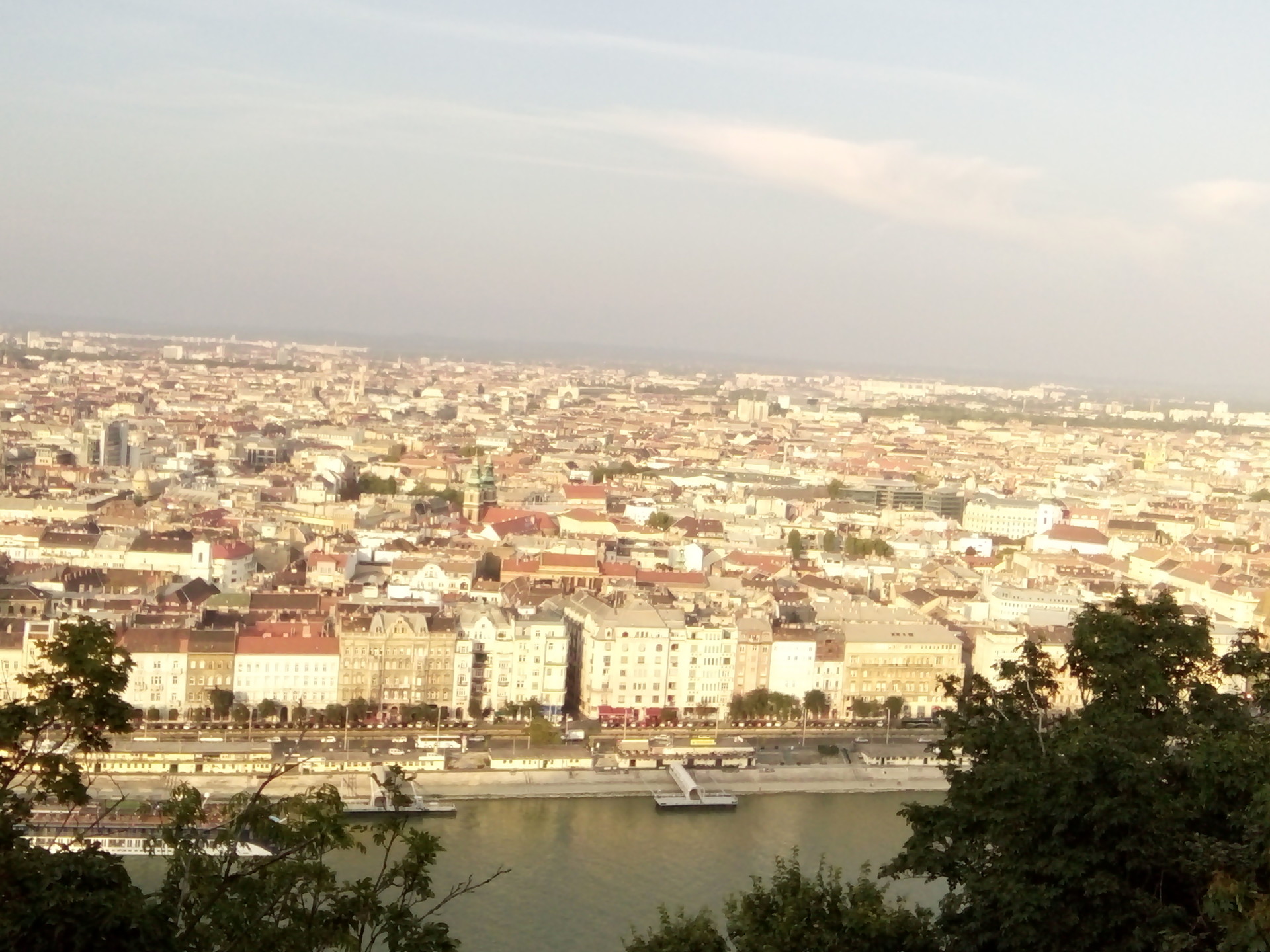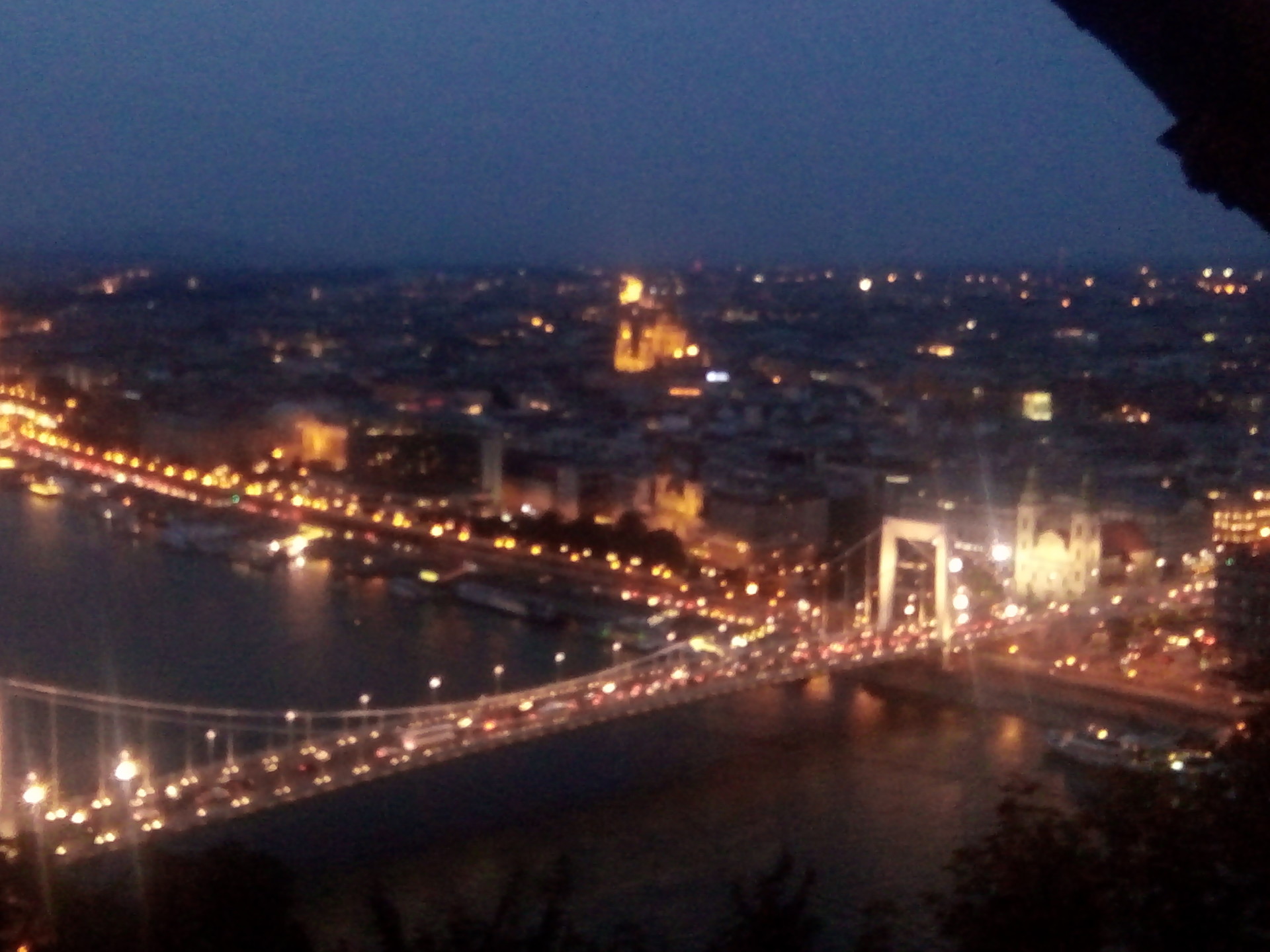During my entire semester of stay in Budapest, one of the best places that left an indelible impressions to my mind, if not the best place ever, is the Gellert Hill Citadel, more popularly known among locals as "Citadella."
If I were to count the number of times I have been to in this place, my memory fails me as to how many times have I exactly visited the place because it has been my habit to go to this place every time I feel stressed and want to relieve myself from the occasional boredom of a student life once in a while.
If you are to visit Budapest and wants the whole city in sight, you should not miss visiting Citadella. I guarantee you the effort that you spent climbing up the hill is worth the view you would see.
The location
The Citadella is quietly nestled at the top of the Gellert Hill. Sitting pretty at the plateau of the Gellert Hill, it offers you the best of sights that the city of Budapest can offer. So how do you get to Citadella?
The best way to reach the peak and get to the fort is to walk provided you are relatively near to the hill. It is easy to see the Gellert Hill from far afar since it towers from other topographic features of the city. Moreover, the Liberation Monument is a prominent structure at the top of the hill.
One of my professors at the Corvinus University of Budapest who accompanied us in one of our tours in the city related to us that the Gellert Hill has a story in itself. Accordingly, it was named after a person who was thrown to the hill to die. There was then a tumultuous pagan uprising when this tragic event took place. That person was a religious man of the Roman Catholicism religion. He was a bishop of the place who was placed inside the barrel by a mob and was caused to be thrown down the hill. That person was eventually martyred and was canonized and declared a saint. His name was Gerard, who afterwards came to be known as Saint Gerard. The name of the hill, Gellert Hill, was actually derived from the name of this martyred saint in Hungary.
I have to admit that I am not that good in finding and in giving directions. But once I got into the city, it becomes easy for me to explore it. So if you find yourself in a walking city like Budapest, you do not have to worry that much as to where to go and in which directions to head. As it is a well-organized city, is relatively easy to navigate from one part of the city to another. Budapest is a tourist friendly city because the structures, buildings and places of interest are so strategically situated that you have an easy time lto jump from one place, then hop to the next place and sprint to another location. I would suggest getting a good map from the tourists' booth which are found in some major areas in the city centre. You can find them along touristy streets of the city. The young tourists information staff are friendly, approachable, willing to extend necessary information to tourists. Most of them speak really good English.
If you are from the Szabadsag Bridge or Liberty Bridge, Citadella is about a fifteen-minute walk away from the foot of the hill. Hiking up through the hill entails some physical exertions. So if you have some cardio-vascular concerns or have trouble engaging in some physical activities, getting up the Gellert Hill through hiking, in my opinion, is not advisable. I would not recommend it for first-timers who got some medical concerns on getting tired easily. But I would say that the hill is not so hard to climb because there are terrain paths which were built purposely to make the hill easily navigable for tourists. In fact there are several ways to go up the hill depending on which part of the foot of the hill you are.
Should you have some problem trekking up the hill, you may take a bus that will bring you directly at the top of the hill. For instance, if you happen to be at Moricz Zsigmond Square at the Buda side, you can take a bus from there going up the Gellert Hill. My dormitory and my university are situated at the Pest side of the city. From the Pest side of the Danube river, standing at the Szabadsag Bridge, it is not difficult to see the Citadella from far afar inasmuch as the Liberation Monument is a prominently towering structure overlooking the entire city, both at the Buda and Pest sides. The first time I saw the Liberation Monument, I was perplexed as to what is that structure: seemingly a woman holding a laurel (of course the first time I saw it, but it was not actually a laurel wreath a leaf of a palm).
But if you want to sweat out a bit, it is easier to explore the place from the foot of the hills up until you reach the pinnacle of the plateau where Citadella is built.
In the second part of my post about Citadella, I will relate to you my first-time personal encounter with Citadella.
The structures and sights up the hill
While hiking up the hill is a challenging prospect, once you reached the top, the view that welcomes you is worth the sweat.
As I observed it, a great number of tourists climb up the Citadella in order to get a panoramic view of the entire city of Budapest, unaware that there are a lot of things to see in the fortification itself other than the good vantage location giving an eagle's eye view of the city. I, too, had the same mind set the first time Iwhen I went up the hill. I originally intended to just see the entire city of Budapest in a top perspective. it is only by accident that I discovered that there is more to see at the top than the panoramic perspective of the city. You are missing a lot of the place if you fail to discover the more significant parts of this place.
The first thing that strikes me the most when I hit the summit is the Liberation Monument. Truth to tell, the first time I visited the place, I have no inkling as to what the statue really means and how significant it is to Hungarian history. I only discovered albeit heuristically through a tourist guide who was escorting a group of tourists that the Liberation Monument is a reminder of the emancipation of the Hungarians from the Nazi invasion. It is said to have been erected by the Communists to symbolize Hungary's freedom from the Nazis. The figure itself is symbolic. It represents the Hungarians' unparalleled love for liberty, patriotic and nationalistic fervour as well as unified actions to achieve independence from invasion and oppression. The Liberation Monument is represented by a woman---stalwart, strong and sturdy; it typifies the courage and strength of Hungarians to drive repression. The lady is holding a palm leaf, with both hands raised in the sky. The first time I saw it I reckoned it was a laurel wreath. Apart from this, I also noticed three other statues: that of a man which appears to be in struggle against a five-headed dragon, another man which seemingly represent a Red Army soldier; and still another, a woman which appears to be holding a torch. Personally, I do not know what each statute represents but as I understand it, the woman holding a torch represents enlightenment and wisdom; the man fighting the dragon represents the good subduing eviltry and finally the soldier is reminiscent of the Communist era in Hungary. I might be wrong on these interpretations of mine though.
I have taken a picture of the statute of the lady holding a palm frond wtih her hands raised in the heaven. This act symbolizes freedom and liberty and submission to the Divine Providence of the fate of man and the destiny of the Hungarian nation.

Another highlights of the Citadella are photo exhibitions. I really find it interesting to get a sense of the religious aspects of Hungarian history through the lenses of some artists who made it possible for the present generation to get acquainted with the Hungarian saints. Hungary is predominantly a Christian country. Majority are of Catholic adherence. I can easily relate with the Hungarian experience of Catholicism inasmuch as the Philippines is predominantly a Christian country, a great bulk constituting almost around ninety five percent (95%) of the total population.
There is a museum inside the Citadella. I had the chance of visiting it and was really awed by the amazing stuffs they had inside. You will be immersed with a detailed account of Hungarian history in this museum. Depicted in the museum includes the Nazi regime which I think is one of the most unforgettable episodes in Hungarian history. Likewise depicted are the siege of Budapest as well as the occupation of the Soviet of the country. The amount of information that you can obtain from the museum are priceless. There may be a minimal fee but the richness of details about Hungarian history and culture that you can learn are without tag price.
In the immediate surrounding of the Citadella are various stalls selling different items. If you want some souvenir items like hat, embroidered garments, tokens, etc, you can just drop by in one of the stores situated along the walls of Citadella. You may also want to grab a bite: goulash, barbecues and pizzas are just around the corner. You may also wish to try the boiled wine, the Hungarian style. It was a bit colder when I chanced upon to visit the hill. To warm my body from the November chill, I bought a glass of wine for around 900 forinth. The wine warmed me up and gave me a soothing sensation helping me to maintain a relaxed feeling. Here is a picture of mine while at the top of the Gellert Hill savouring every moment of my stay in Budapest. The air at the top is refreshing and the view is just amazing.

There are lots to see in the Citadella. Just walk along the walls further and you would be able to see some of the old military equipment, perhaps those which were used during the war. Apparently they were the surviving remnants of the last world war. Pictures depicting Hungarian history and as well as some photos of historical tidbits as to how the Citadella was built and rebuilt were likewise portrayed in some pictures which were fixed on the walls.
Of course, your trip up the hill will not be complete without taking some pictures of the city with the best angles that you can find while beholding its beauty at the top of the hill. Without intending to sound exaggerated, a picture of the city at the top is like a postcard that you typically see only in photos. Further, at the top of the hill, you can pinpoint the locations of some important architectural and historical destinations in the city: the Szabadsag bridge, the Erzebet Bridge, Chain Bridge, the long span of the Danube river, the St. Stephen's Basilica and even the Parliament is visible from far afar.

During the night, the city of Budapest is even more beautiful. Good shots can be taken at the top during the night, with the lights flooding the entire city. Here is how the city looks like during the night:

Citadella should be in your top list once you get to Budapest. It is a must-see destination. You will surely fell in love with the city and as you gradually discover its amazing architectural wonders, you will learn to love its culture and history. As soon as you decide to go to Budapest, it is best to trek up the Gellert Hill. Getting a good cardio workout climbing up the hill is an added virtue of walking up the hill going to the top to get to Citadella. Get to see more of the city as you explore its endless beauty!
